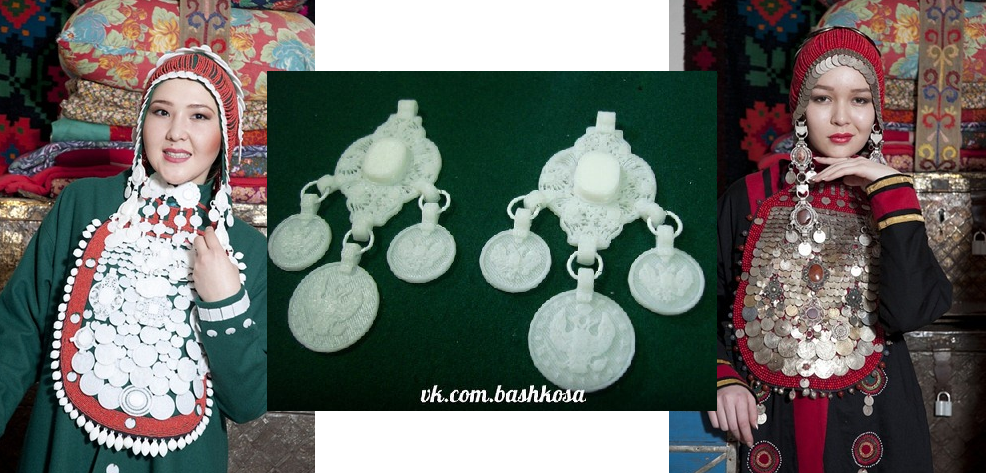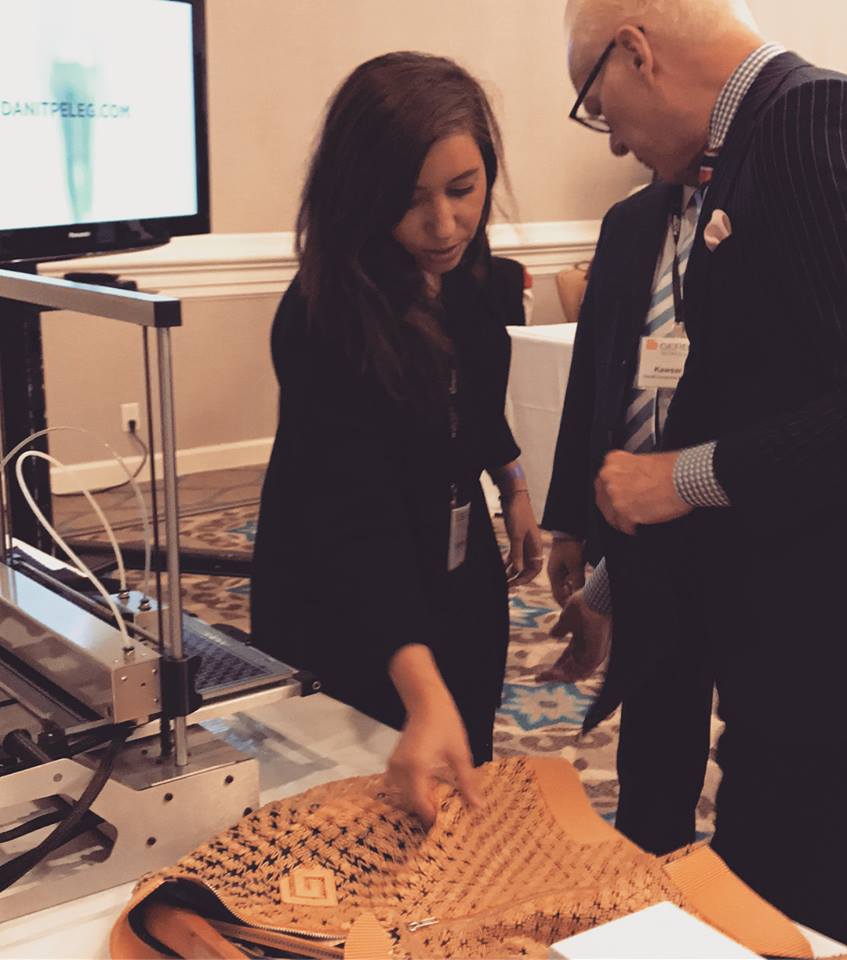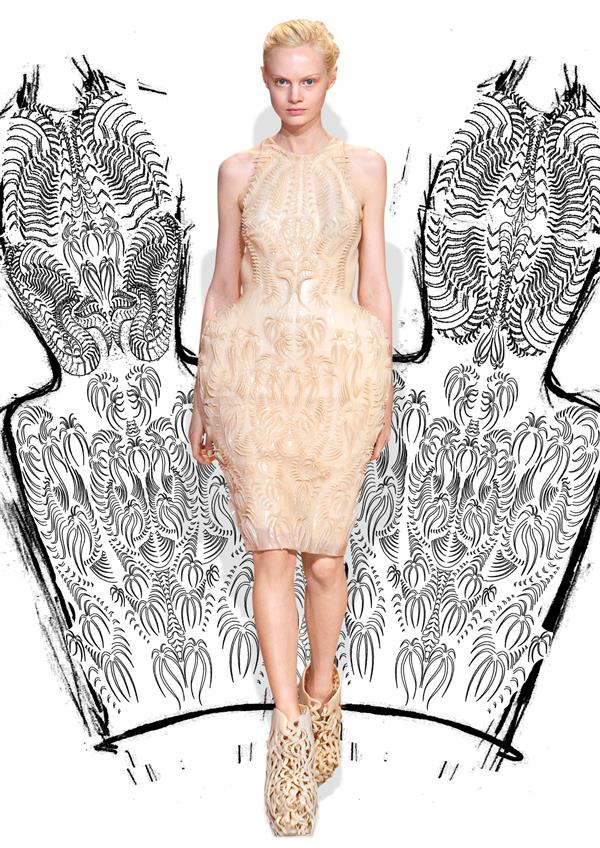
The textile industry has always been a driver of and first responder to technological developments, which I am writing about in a post for later… But this post is about how fashion and tech have developed together recently.

While I wrote my recent post on inclusive lingerie, I kept coming across this article about a Russian designer, Viktoria Anoka, who used 3-d printing to make a bra and panties set in order to get around an import regulation. Closer investigation reveals that all the articles say *exactly* the same thing, and use the same photograph, so I think a novelty piece caught the eye of many newswriters. The most detailed version was this one, from the Moscow Times:
https://themoscowtimes.com/articles/russians-3d-printing-underwear-after-lace-ban-38803
The tale was picked up enthusiastically by a 3-D print-enthusiasts’ newsletter:

The novelty lingerie set, described by the woman modeling it as “interesting but not for everyday life”, made headlines all over the U.S. However, Anoka’s Facebook page suggests that her main design focus appears to be wedding and other special-occasion wear.
These articles both describe Anoka’s innovation as a creative response to a law banning underwear manufactured with non-absorbant materials, which most synthetics don’t. This law, enacted in a trade region encompassing Russia, Belarus and Kazakhstan, effectively banned the most commonly used materials in women’s underwear, including the lace.
Note this other article, where Anoka has used 3-D printing to recreate traditional forms of jewelry (see the cover pic) used by the Bashkir tribe of Russia. Anoka’s printed-jewelry experiment makes it clear that she is exploring many of the possibilities of 3-D printing.
https://3dprint.com/tag/victoria-anoka/
https://www.facebook.com/viktoria.anoka
http://hauteliving.com/2011/02/oh-la-la-the-top-5-lingerie-stores-in-moscow/125703/
 She is not alone in this. Jessica Haughton, a fashion student from Nottingham Trent University, in the United Kingdom, is also experimenting with 3-d printed techniques to make women’s undergarments. In her 2016 lingerie collection, the silicone replaced boning and elastic, because the material, once printed and cured, is both strong and flexible. Haughton also points out that silicone degrades much less over time than does elastic normally used in bras and support garments.
She is not alone in this. Jessica Haughton, a fashion student from Nottingham Trent University, in the United Kingdom, is also experimenting with 3-d printed techniques to make women’s undergarments. In her 2016 lingerie collection, the silicone replaced boning and elastic, because the material, once printed and cured, is both strong and flexible. Haughton also points out that silicone degrades much less over time than does elastic normally used in bras and support garments.
https://3dprint.com/138006/stretched-silicone-lingerie/

“3-d printed,” says Haughton, “can create more intricate detailing than traditional methods. In many ways, when printed onto sheer mesh as a floral pattern, it’s like a modern alternative to lace.” These patterns are the signature look of her line, Bare Baux Intimates.
The British press cheekily pointed out that the silicone “elastic” lies closer to the skin and could help eliminate visible panty lines.
http://www.mirror.co.uk/tech/student-invents-high-tech-knickers-8160500
Haughton is also chasing the goal of downloadable, custom fit lingerie for all women.

Israeli designer Danit Peleg has beaten Haughton to the printable ready-to-wear market, however. She made a splash in 2015 by 3-d printing much of her senior design collection at home.
That she has managed to envision uses of this kind of printing for daily wear is inspiring. Many committed designers have wrestled with getting the technology to create the kind of supple texture needed for clothing to be functional and comfortable, and failed:
https://backchannel.com/the-shattering-truth-of-3d-printed-clothing-7b83f231af50

Other designers have tried to make use of this technology, notably Michael Schmidt and Francis Bitonti, with their gown for Dita von Teese in 2013, and Iris van Herpen who has shown at least one 3-d-printed dress in her collections since 2010 as well. Van Herpen’s process is complex, however, and only feasible for couture, as this article details:
https://www.thecut.com/2016/04/designer-who-mixes-technology-with-couture.html
Van Herpen’s work with the technology has made her a darling of 3-d printing enthusiasts, who cover her work regularly:
But managing the materials in order to work around their rigidity and fragility has been the hard part. By all accounts, Peleg’s success lies in the wearability of the clothing she produces, which is no small feat:
The designer credits the Filaflex material, created by Recreus, a 3-d printing materials manufacturer, for getting a mesh flexible enough to be wearable. And that wearability has made Peleg an internet celebrity. She made a video of her first collection which quickly went viral. The designer had to keep learning to make it happen: the materials for the collection took more than 2000 hours to print, with each individual dress taking around 20 hours. Peleg had to set up an array of 3-d printers in her workshop in order to get the collection done.
https://3dprint.com/83423/danit-peleg-3d-printed-fashion/
The video of this achievement, the first 3-d print-on-demand designer garment (below), shows signs of being similarly popular.
Peleg’s experimentation has made her a popular tech speaker, and led to her well-viewed TED talk on the subject. The title? “Forget shopping: soon you’ll download your new clothes”.
For a further peek at other technologies advancing the fashion world:
https://www.highsnobiety.com/2015/03/31/future-textile-technologies/